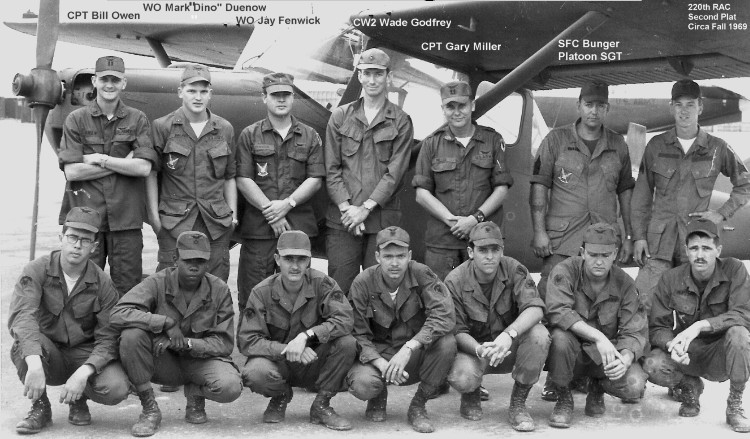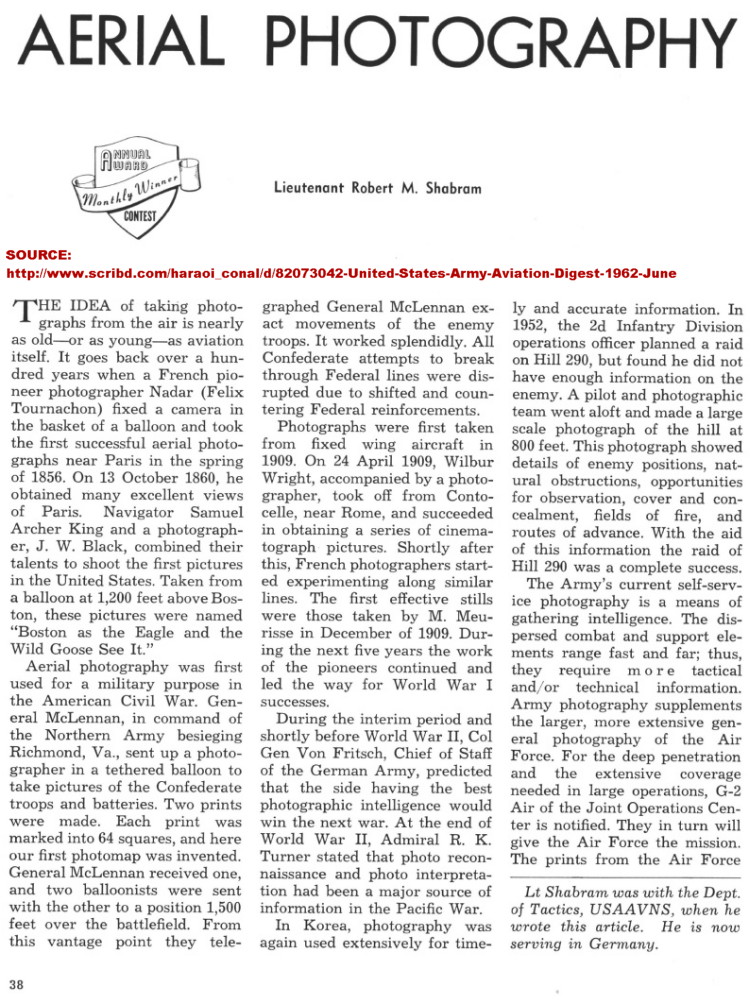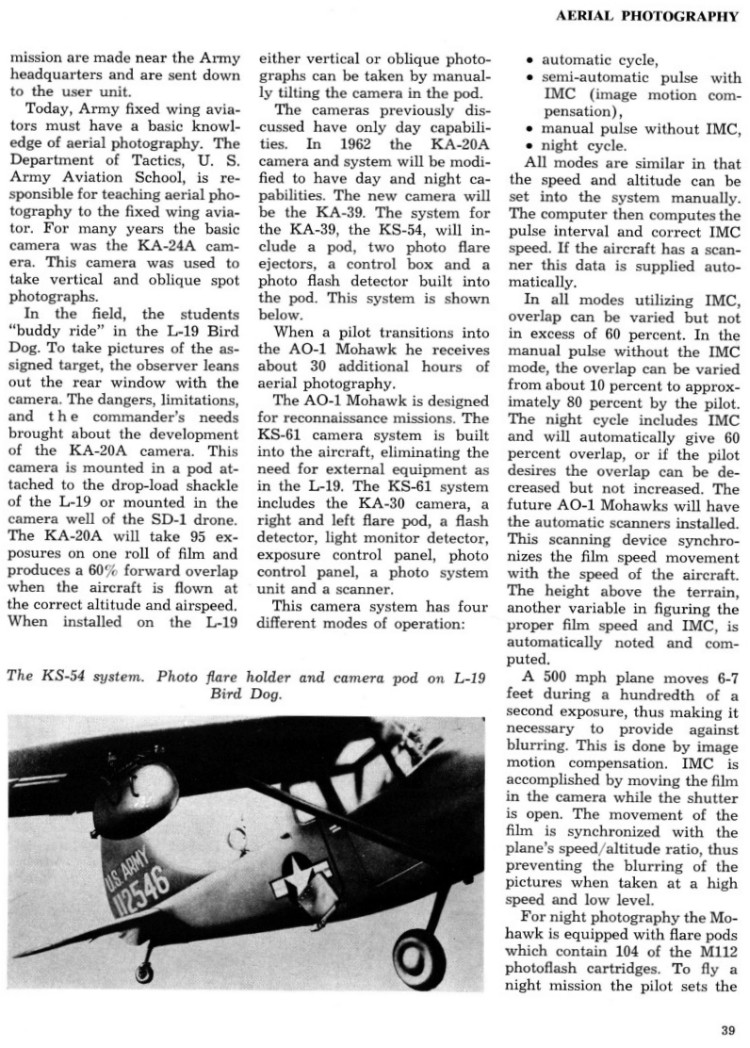My experience working
with the KA-39 Camera
By Wade Godfrey, CW3, Retired

When I joined the 220th RAC in November 1969. I started as a pilot, and this is where I first experienced the KA-39 camera. When the unit received the camera, I flew two missions with it, but neither produced acceptable results. Discouraged and wanting to return to just flying the airplane, I discussed the situation with my platoon leader. He suggested I needed something for my OER rating and why not contiinue to learn how to properly use the camera system?
I left his presence with a new determination and went on to thoroughly read each of the technical manuals that came with the camera, as well as any supplimentary reading material I could find on the KA-39. I practiced loading the camera in my room at night, until I was comfortable with it; then, my crew chief assisted as we conducted tests ofthe camera mounted on the aircraft. Thereafter, I flew several successful camera-mounted missions and worked with the 101st Military Intelligence (MI) Company to improve upon inflight techniques. As I became experienced and proficient, I instructed other pilots on how to load and use the KA-39.
Obtaining film was a challenge, but I was able to obtain 200 rolls of film and stored them in the mess hall cooler. This preserved the film so it did not deteriorate due to the heat and humidity.
In the 2nd platoon we found the camera to be very valuable for intelligence purposes, because we were required to have evidence of our spot reports for the 101st G2 section, as they did not believe our reports. So, we began to use this asset for backup evidence in our daily operations, and the 101st MI used our camera film to make briefing charts for the Division Commander. We did not get credit for much of this.
Early in 1970, I received an invitation to attend the Saigon RECCE conference, to prepare and deliver a system briefing to a joint meeting of about sixty air force and army officers. They were very impressed with the idea that Birddog companies could produce such useful aerial photography, especially since it cost so much money to fly SR-71´s and RB-66´s on smaller missions. I was further encouraged by the air force's offer to provide us with supplies of the better 12-inch format film useable in the KA-39´s.
Shortly thereafter, the army sent me to Da Nang to instruct VNAF unit pilots on use of the KA-39 and how to load and service it. I spent approximately one week working with the VNAF and found their pilots to be very good. Their eager-to-learn attitude made them easy to teach, and I was very impressed with the results.
Inquiring calls began to come from other Birddog companies in Vietnam regarding the KA-39, because they were required to place the camera system into service. These additional units soon discovered that with this camera came an unique problem: the KA-39 camera would only carry 90 usable feet of film, and it was not possible to reload the camera during flight. The growing demands on potential intelligence data from the camera was overwhelming, but units had to contend with the fact that they were initially being tasked to cover large areas that a single load of film could not adaquately cover.
I learned a lot from this project and realized quickly that our biggest limitation was in our lack of knowledge and experience operating the KA-39. This camera created a tremendous amount of drag under the right wing, which made flying the aircraft more difficult. This meant that many pilots did not like to fly with the camera mounted due to the loss of performance. One positive aspect was that the system was a very economical and could be easily repaired, and it produced excellent results. The 12x12 format was one of the largest film formats in use at the time. In contrast, the OV-1 used a 6-inch format that was more expensive to operate than one mounted on a Birddog.
Editor's Note: Unit history files show the unit started photo missions with the KA–39A1 Wing Mounted Camera as of 3 August 1969 (see 1969 history overview), and that unit members state the camera was also employed earlier to search for Lee Harrison, who was MIA on 29 October 1968 (mentioned in Jim Hooper's book): "There is a reference on page 126 in A HUNDRED FEET OVER HELL that Jim Wisby flew the "photo bird" with the camera pods under each wing in the search for Lee Harrison. I have never seen anything in the history files about the use of the camera(s) during that "era", but at least they appear to have been in the inventory and mounted on an aircraft. It then appears that Gene Gephardt took a renewed interest in the KA-39 after he took command in July 1969. Wade then took on a deeper interest after talking with his Plt Ldr and became the "expert" in the use of the KA–39 in the 220th. [Gene Wilson]"
Supplement Article:
Historical Overview of:
This article from a 1962 not only discusses the KA–39, but also contains a photograph of the camera and excellent old fixed wing photographs, which you will see if you follow the link:








